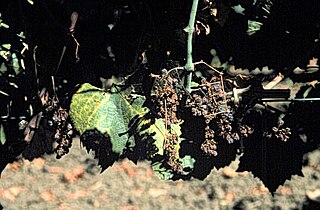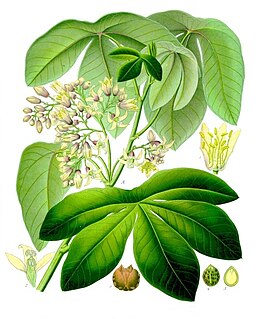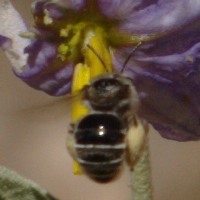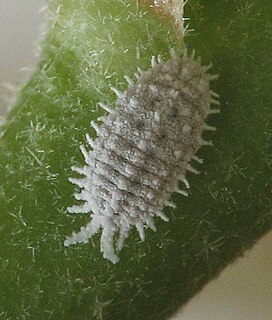
Rhizoctonia solani is a plant pathogenic fungus with a wide host range and worldwide distribution. It was discovered more than 100 years ago. R. solani frequently exists as thread-like growth on plants or in culture, and is considered a soil-borne pathogen. R. solani is best known to cause various plant diseases such as collar rot, root rot, damping off, and wire stem. R. solani attacks its hosts when they are in their early stages of development, such as seeds and seedlings, which are typically found in the soil. The pathogen is known to cause serious plant losses by attacking primarily the roots and lower stems of plants. Although it has a wide range of hosts, its main targets are herbaceous plants. R. solani is a basidiomycete fungus but the teleomorph stage is not prominent. Occasionally, sexual spores (basidiospores) are produced on infected plants. The disease cycle of R. solani is important in management and control of the pathogen. The pathogen is not currently known to produce any asexual spores (conidia), though it is considered to have an asexual lifecycle perpetuated through sclerotia.

Fusarium solani is a species complex of at least 26 closely related filamentous fungi in the division Ascomycota, family Nectriaceae. It is the anamorph of Nectria haematococca. It is a common soil fungus and colonist of plant materials. Fusarium solani is implicated in plant disease as well as human disease notably infection of the cornea of the eye.

Silver scurf is a plant disease that is caused by the plant pathogen Helminthosporium solani. Silver scurf is a blemish disease, meaning the effect it has on tubers is mostly cosmetic and affects "fresh market, processing and seed tuber potatoes." There are some reports of it affecting development, meaning growth and tuber yield. This is caused by light brown lesions, which in turn change the permeability of tuber skin and then it causes tuber shrinkage and water loss, which finally causes weight loss. The disease has become economically important because silver scurf affected potatoes for processing and direct consumption have been rejected by the industry. The disease cycle can be divided into two stages: field and storage. It is mainly a seed borne disease and the primary source of inoculum is mainly infected potato seed tubers. Symptoms develop and worsen in storage because the conditions are conducive to sporulation. The ideal conditions for the spread of this disease are high temperatures and high humidity. There are also many cultural practices that favor spread and development. Luckily, there are multiple ways to help control the disease.

Rhizoctonia is a genus of anamorphic fungi in the order Cantharellales. Species do not produce spores, but are composed of hyphae and sclerotia and are asexual states of fungi in the genus Thanatephorus. Rhizoctonia species are saprotrophic, but are also facultative plant pathogens, causing commercially important crop diseases. They are also endomycorrhizal associates of orchids. The genus name was formerly used to accommodate many superficially similar, but unrelated fungi.

Coelonia solani is a moth of the family Sphingidae. It is known from Mauritius, Réunion, Madagascar and the Comoro Islands. It is a pollinator of some species of baobab in Madagascar, including Adansonia za.
Cristian Franco Lema is an Argentine professional footballer who plays for Newell's Old Boys as a centre-back.

Dickeya solani is a bacterium that causes blackleg and soft rot in potato crops. Its symptoms are often indistinguishable from those caused by Pectobacterium but is more virulent, causing disease from lower levels of inoculum and spreading through the plant more effectively.

"Candidatus Phytoplasma solani", the causal agent of the black wood of grapevine, is a bacterial Phytoplasma species of the 16SrXII group.

Manihot carthaginensis subsp. glaziovii, also known as Manihot glaziovii, the tree cassava or Ceara rubber tree, is a species of deciduous flowering plant in the spurge family, Euphorbiaceae, that is native to eastern Brazil.

Lema is a genus of beetles in the family Chrysomelidae.
Irbisia is a genus of plant bugs in the family Miridae. There are more than 20 described species in Irbisia.
Lema nigrovittata is a species of leaf beetle in the family Chrysomelidae. It is found in Central America and North America.

Lema trivittata, known generally as the three-lined lema beetle or three-lined potato beetle, is a species of leaf beetle in the family Chrysomelidae. It is found in Central America and North America.
Lema confusa is a species of leaf beetle in the family Chrysomelidae. It is found in the Caribbean Sea, Central America, North America, and South America.
Lema balteata is a species of leaf beetle in the family Chrysomelidae. It is found in Central America and North America.

Exomalopsis solani is a species of bee in the family Apidae. It is found in Central America and North America.

Phenacoccus solani, the solanum mealybug, is a species of mealybug in the family Pseudococcidae.
Lema conjuncta is a species of leaf beetle in the family Chrysomelidae. It is found in North America.
Irbisia solani is a species of plant bug in the family Miridae. It is found in North America.
Lem's Law is an adage suggested by the Polish science-fiction writer and philosopher Stanisław Lem. It is best known from his faux review "Jedna Minuta" ["One Minute"] of the non-existing book One Human Minute (1984), but he formulated it in his correspondence already in 1978.












